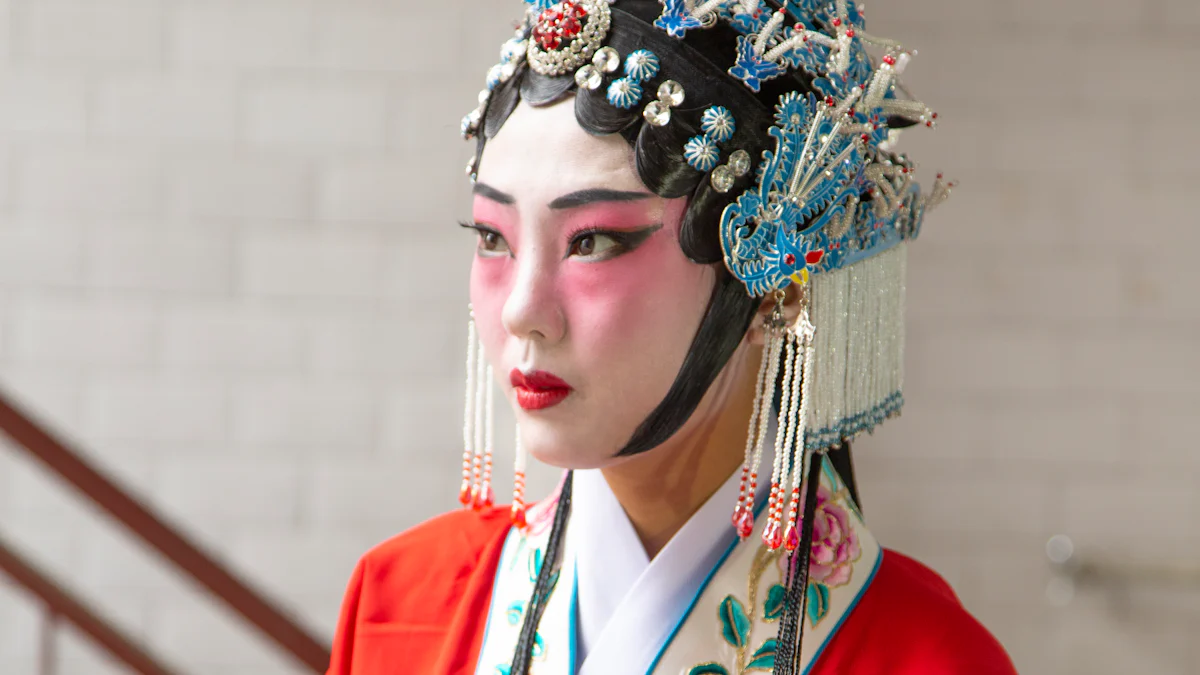 Hanfu, the traditional attire of the Han Chinese, holds a profound historical significance that dates back to ancient times. Its evolution from the elegant robes of the Han Dynasty to its modern resurgence reflects a cultural journey worth exploring. Understanding Han Dynasty Hanfu is crucial for appreciating its impact on contemporary fashion and identity.
Hanfu, the traditional attire of the Han Chinese, holds a profound historical significance that dates back to ancient times. Its evolution from the elegant robes of the Han Dynasty to its modern resurgence reflects a cultural journey worth exploring. Understanding Han Dynasty Hanfu is crucial for appreciating its impact on contemporary fashion and identity.
Han Dynasty Hanfu
In the historical context of Han Dynasty Hanfu, the origins and development trace back to ancient times, showcasing a rich tapestry of cultural heritage. The clothing during this era was divided into two distinct categories: Shenyi (long coats or robes) and Yijin (jacket-gowns). The Long Coat (Shenyi) dominated the Western Han Dynasty attire, while the Jacket Hanfu Gown (Yijin) became prominent in the Eastern Han Dynasty. These garments exemplified elegance and sophistication, reflecting the grace of traditional Han Dynasty Hanfu.
The design and characteristics of Han Dynasty Hanfu were deeply intertwined with Confucian principles, emphasizing modesty and propriety in attire. Men typically wore Zhiju and Shenyi, exuding a sense of dignity and honor. On the other hand, women adorned themselves in Ruqun, a loose-fitting robe that symbolized grace and femininity. The influence of Confucian ideals permeated every aspect of clothing types, shaping not just fashion but also societal norms.
The intricate patterns and flowing silhouettes of Han Dynasty Hanfu embodied a harmonious blend of aesthetics and cultural symbolism. Each garment told a story of tradition and refinement, reflecting the values cherished by ancient Chinese civilization. The revival of this classical attire in modern times signifies a resurgence of pride in cultural identity and a celebration of timeless elegance.
Decline and Revival
The transition from traditional Hanfu to Manchu clothing marked a significant shift in Chinese attire. Historical factors influenced this change, leading to the gradual decline of Hanfu’s prominence. The impact on Hanfu was profound, as the introduction of Manchu garments reshaped the sartorial landscape of the time.
The subsequent emergence of the Hanfu movement signaled a revival of interest in traditional clothing. Through dedicated revival efforts, enthusiasts sought to reintroduce Hanfu to contemporary fashion scenes. This resurgence garnered modern popularity, attracting a new generation fascinated by the elegance and cultural depth embedded in Hanfu designs.
Expert Testimony:
Experts in the Fashion Industry emphasize that the rise of Hanfu is driven by a mix of rising nationalism, savvy local brands, and amplified social hype amongst Chinese Gen Zers. The increasing popularity of Hanfu reflects a broader trend towards embracing traditional cultural elements and redefining notions of style and identity.
According to Fashion Industry Experts, the growing appeal of Hanfu signifies a shift in how individuals perceive cultural heritage and self-expression. By embracing their roots through traditional attire like Hanfu, individuals are redefining notions of coolness and constructing their self-image in a society that values authenticity over Western influences.
In essence, the transition from Manchu clothing back to Hanfu represents more than just a sartorial change—it embodies a cultural renaissance that celebrates China’s rich heritage and paves the way for future generations to embrace their roots with pride.
Modern Elegance
In the realm of Han Dynasty Hanfu transitioning to modern elegance, contemporary designs play a pivotal role in bridging the past with the present. The fusion of tradition with modernity encapsulates a harmonious balance that resonates with both cultural enthusiasts and fashion aficionados alike.
Blending Tradition with Modernity
The essence of Han Dynasty Hanfu is not lost in contemporary designs; instead, it is reimagined to suit the dynamic lifestyle of today’s society. Designers intricately weave traditional elements into modern silhouettes, creating a seamless blend of ancient charm and present-day allure. By infusing classic motifs with innovative techniques, each garment tells a story of cultural continuity and artistic evolution.
Influence on Modern Fashion
The influence of Han Dynasty Hanfu extends beyond its historical roots, permeating the fabric of modern fashion trends. As Chinese designers strive to reconnect the past with the present through Hanfu, global audiences are increasingly drawn to its timeless appeal. The simplicity and elegance of Hanfu have transcended borders, captivating fashion enthusiasts worldwide and gracing prestigious runways with its ethereal presence.
Cultural Impact
Embracing Han Dynasty Hanfu as a symbol of identity goes beyond mere sartorial choices; it embodies a profound sense of cultural pride and heritage. The global recognition garnered by Hanfu reflects a growing appreciation for China’s rich history and living traditions. Through innovative designs showcased on international platforms, Hanfu continues to shape contemporary fashion landscapes while preserving the legacy of ancient craftsmanship.
- Hanfu’s journey from ancient to modern times is a captivating narrative of cultural resilience and sartorial elegance. The evolution of Hanfu design reflects a deep-rooted appreciation for tradition and craftsmanship, resonating with enthusiasts worldwide.
- Its cultural significance transcends mere fashion; it embodies a symbol of identity and pride for the Han Chinese. The global recognition garnered by Hanfu underscores a growing appreciation for China’s rich heritage and living traditions.
- Looking ahead, the future prospects for Hanfu in global fashion are promising. As more individuals embrace their roots through traditional attire like Hanfu, the legacy of ancient craftsmanship continues to inspire contemporary fashion landscapes with its timeless allure.






